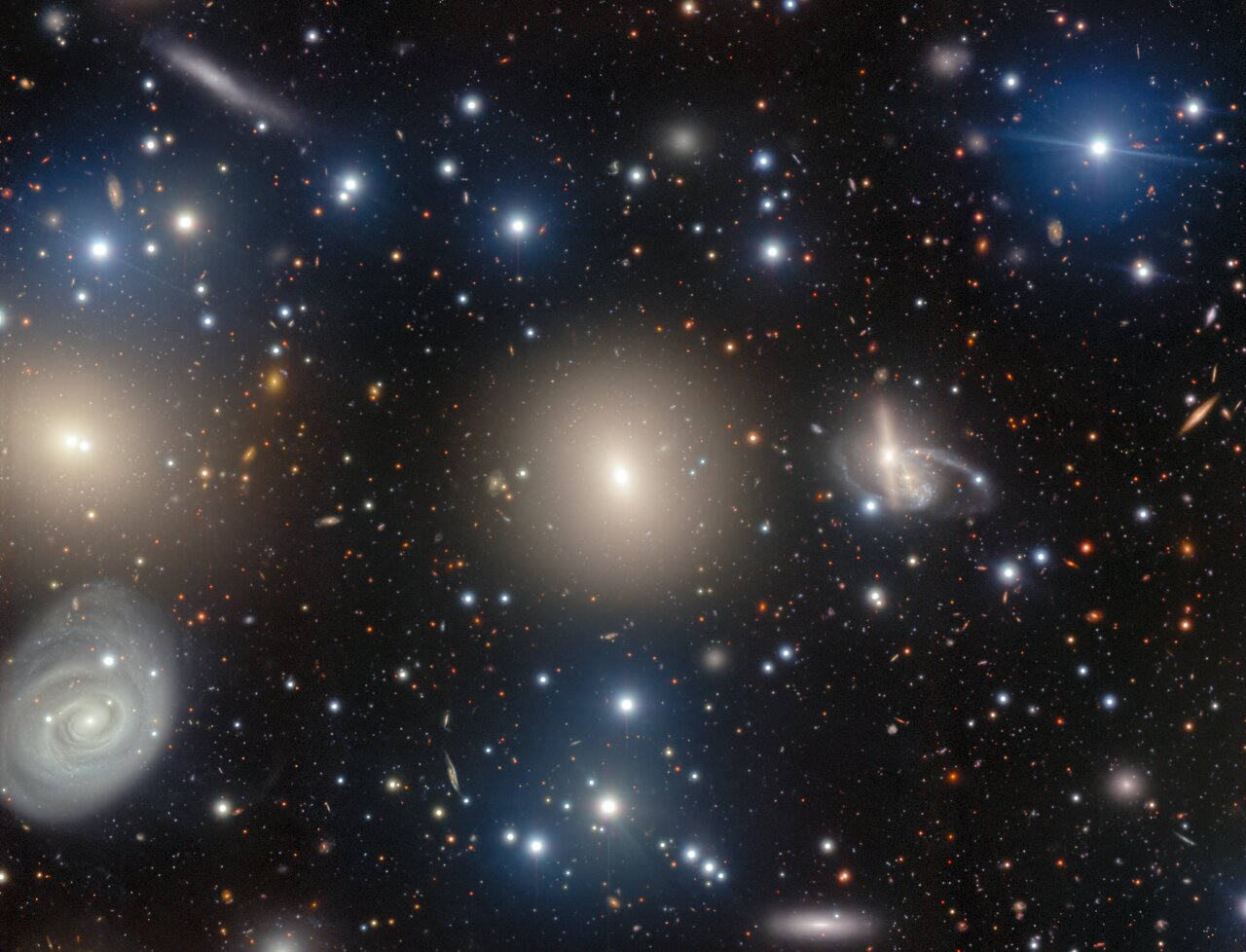Knowridge
3w
338

Image Credit: Knowridge
Dark matter has a firm grip on these galaxies
- NGC 1270, part of the Perseus Cluster, is the brightest X-ray object in the sky and imaged by Gemini North telescope but dark matter cannot be seen.
- The discovery of other galaxies beyond the Milky Way goes back to 1920 when Edwin Hubble found individual stars far beyond the Milky Way which are trillions of other galaxies.
- Dark matter, more accurately called invisible matter, binds galaxies and other groups together into a coherent group.
- The Perseus Cluster is associated with the Perseus-Pegasus Filament, a long, thin structure of galaxies over a billion light-years.
- Scientific theory suggests that a web of invisible dark matter draws galaxies together, where they intersect with its gravitational pull.
- Vera Rubin (American astronomer) observed in 1970s that stars move faster than predicted by visible mass of galaxies. She thought there must be more invisible matter than visible matter beyond galaxy’s visible edge.
- Our Universe is dominated by Dark matter, which is mapped only by its inference alone, without knowing what it is.
- Lambda Cold Dark Matter (Lambda-CDM) model of cosmology is a widely accepted understanding of dark matter but it still can't tell what dark matter is.
- Most scientists think that dark matter is some type of particle, but if it is, it is extremely elusive.
- Observation of objects like NGC 1270 and the Perseus Cluster can help to see the effects of dark matter, even though we cannot see what it is.
Read Full Article
20 Likes
For uninterrupted reading, download the app